As parents, witnessing our toddlers' boundless energy and enthusiasm is a daily adventure. Harnessing and channeling that exuberance into a constructive and engaging activity can be exciting and beneficial.
If you've noticed your little one flipping, jumping, and tumbling around the living room, consider introducing them to the captivating world of gymnastics. However, preparing toddlers for gymnastics involves more than just signing them up for a class.
So, you're thinking about introducing your little one to the world of toddler gymnastics? Great call! I'm here to explain why gymnastics for toddlers is more than just adorable tumbles and mini-saults.
Toddlers are developing their motor skills at a critical juncture. Toddlers who participate in gymnastics can improve their gross and fine motor abilities, strengthen their bodies, and perfect their motions.
Many balancing exercises are part of gymnastics practices, greatly improving a toddler's coordination. Learning to regulate motions while maintaining balance on various apparatuses lays the foundation for better coordination and spatial awareness.
Gymnastics exposes young children to a supervised setting to socialise with other children. Together with developing social skills, cooperation, and teamwork, group exercises and activities help the young gymnasts develop a sense of togetherness.
A toddler's confidence can greatly increase through gymnastics as they learn new abilities and overcome obstacles. Gradual improvement in gymnastics builds a sense of accomplishment that benefits one's self-image in other spheres of life.
Gymnastics requires comprehending bodily positions, memorising routines, and obeying directions—all beneficial to cognitive growth. Toddlers who participate in gymnastics frequently show increased focus and processing speed.
Gymnastics programmes offer a regulated setting where young children can learn the values of self-control and obedience. Early establishment of these bases can positively impact a child's attitude towards learning and adjusting to norms in different contexts.
Gymnastics gives toddlers, who naturally have a lot of energy, a fun and interesting way to get it out. Frequent gymnastics practice improves cardiovascular health, strength, flexibility, and general physical fitness.
Gymnastics lays the foundation for many sports and physical activities. Strength, flexibility, and body awareness are among the abilities and talents that gymnasts develop, and these can be useful when switching to other sports later in life.
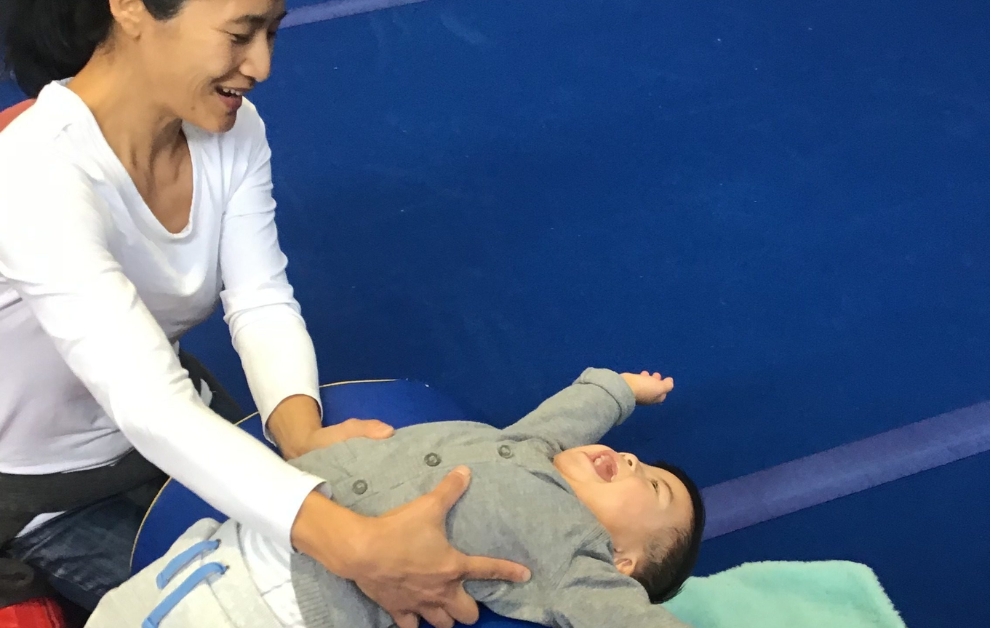
Although toddlers are explorers by nature, watch out for those who go above and beyond. Your child's interest in movement could be a wonderful fit for gymnastics if they are always moving, exploring their physical boundaries, crawling through tunnels, and climbing furniture.
Toddlers are like little energy bundles, as we all know. Suppose they've turned your living room into their obstacle course and are bouncing off the walls. In that case, that unbounded energy is a strong sign that they possess the vitality required for gymnastics, which is dynamic and active.
In terms of absorbing knowledge from their surroundings, toddlers are like sponges. Your child is probably naturally inclined to engage in physical activities, which makes them a fantastic fit for the world of gymnastics. You may notice them doing small somersaults, mimicking dance motions, or even duplicating stretches they've seen elsewhere.
Does mentioning "gymnastics" make your toddler's face light up with excitement? Do they enquire or try pronouncing the term with cutesy enthusiasm? An enthusiastic reaction to the concept of gymnastics suggests a sincere curiosity, which can greatly enhance the learning experience.
As they age, toddlers often use different methods to show their independence. Your child is ready for the hands-on, self-driven activities that gymnastics promotes if they insist on performing tasks themselves, such as putting on their shoes, trying to feed themselves, or zipping up their jacket.
Even while each child develops at their rate, age may generally be used to predict a child's preparedness for a given activity. Around age two or three, most gymnastics programs begin to accept toddlers. If your child falls into this age range and shows indications of being physically ready, gymnastics is a worthwhile alternative to explore.
Is your little one spading their social wings? Gymnastics classes can provide a structured and playful environment for social interaction if they're becoming more comfortable around other children, engaging in parallel play, or showing excitement about playdates. It's not just about flips and tumbles; it's an opportunity to make new friends and learn in a group setting.
I will always remember the excitement of every little one's first gymnastics class at our facilities like yesterday. It's a moment filled with anticipation, giggles, and the palpable energy of tiny adventurers ready to take on the gymnastics world. Preparing for this special occasion involves a blend of practicality and a sprinkle of magic. Here's a guide to ensure that your first gymnastics experience is not just memorable but utterly delightful.
Here are six tips to make that first experience a total win:
We're about to embark on this gymnastics journey. The key here is comfy attire. I'm talking stretchy pants, a snug shirt, and maybe even a cute leotard if your toddler feels fancy. Oh, and don't forget those non-slip socks or teeny-tiny gymnastics shoes—essential for grip and style.
is anyone up for a pre-game pep talk? Make gymnastics sound like the trip of a lifetime to excite your toddler: huge smiles, high fives, and an outline of all the awesome actions in store for them. Creating an exciting environment sets the stage for eager expectations instead of pre-class anxieties.
Come a little early so your child may enjoy the ambience of the gym. Discover the vibrant mats, say hello to other small gymnasts and, of course, make sure everyone is prepared for action with a quick trip to the loo.
Consider the warm-up to be a little stretch-a-thon or a pre-class dancing party. Preparing physically is only one aspect of it; another is making the beginning of the session an exciting occasion. A bit of warm-up playfulness goes a long way.
Take a backseat, but make it a cheerleading one. Find a comfy spot to observe, give your toddler room to shine independently, and hit them with a big smile and a thumbs up whenever they glance your way. Positive vibes only!
In the realm of toddler gymnastics, any small accomplishment is a victory. Whether it's a stable balance posture or an effective roll, ensure the victory dance is ready after class. Celebrating those victories with sincere delight increases their confidence for the following round and feeds their love of learning.
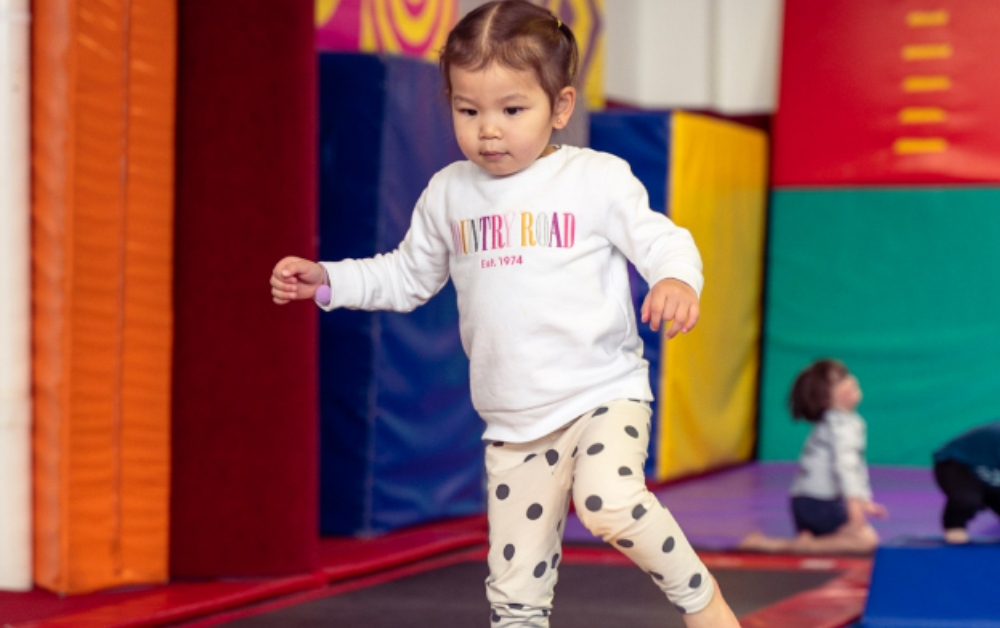
Choosing the right gymnastics program for your little one is like finding the perfect balance beam—it requires a bit of exploration and a keen eye for what suits your child best. Here's a guide to help you navigate the exciting world of gymnastics programs and find the perfect fit:
First things first—pick a class that's like a customised playdate for your toddler. Age-appropriate programs are like finding the right puzzle piece; they fit snugly with your little one's developmental stage and keep the fun vibes flowing.
Picture your gymnastics coach as the ringmaster of a circus, but with more leotards and less lion-taming. You want someone who knows their cartwheels from their handstands and speaks toddlerly fluently. Patience and enthusiasm should be their middle names. A coach who can turn every lesson into a little adventure? Gold.
Safety is our superhero; a clean, well-maintained gym is its secret lair. Look for a place where the floors are padded, the equipment is tip-top, and safety measures are top-notch. We're in the business of creating happy memories, not ouchies.
Toddlers are like tiny tornadoes of energy. That's why a good gymnastics program should feel like a mix of playtime and skill-building. Think games, imaginative activities, and exercises that engage those little minds and bodies. Are they learning through play? That's our jam.
Before you commit to the long haul, dip your toes in with trial classes. It's like a sneak peek into the gymnastics wonderland. Watch how your kiddo reacts, see if they're having a blast, and gauge if the program aligns with your expectations. Oh, and don't forget to pop your head in during a regular class—it's like window shopping but for gymnastics classes.
Try to keep things lighthearted and upbeat on the first day. Tell them it's all about having fun, share your excitement, and give them support. A simple pre-class routine or a preferred snack can reduce anxiety.
Choose a healthy, light snack approximately half an hour before class. A little sandwich, yoghurt, or banana can give you the energy boost you need for the activities.
Although unnecessary, non-slip socks or shoes made specifically for gymnastics can offer superior traction and grip. See if the programme has any special suggestions by contacting them.
Tantrums are par for the toddler course! Maintain a positive attitude, acknowledge their feelings, and try to find a compromise. Establishing a routine and incorporating a favourite element into the pre or post-class ritual can also help.
And just like that, your little one is ready to start their gymnastics journey! From selecting the ideal programme to getting ready for that thrilling first class, the trip is full of laughs, stumbles, and little victories. As a gymnastics coach, I would tell you to savour every precious moment, recognise your little one's accomplishments, and get giddy when they start to realise how amazing movement is.
Remember that it's about more than flips and turns—it's about developing self-assurance, encouraging a love of exercise, and making priceless memories. Prepare yourself for a voyage filled with tonnes of laughing, a dash of curiosity, and a lot of toddler magic as you embark on your gymnastics journey.
I remember when I first introduced baby gymnastics at our gym. Parents had questions – and rightly so. Is it safe for my baby? What can my child gain from these sessions? How can we prepare for this unique adventure?
Fast forward to today, and I can proudly say that baby gymnastics has worked wonders for our little athletes. It's an experience that fosters physical development, builds confidence, and sparks those brilliant little minds.
I've had the privilege of witnessing countless tiny tots take their first steps (sometimes literally) into the world of gymnastics. It's not just about adorable tumbles and infectious giggles; it's about nurturing your child's growth and development from the earliest stages.
In this blog, I'll guide you through all you need to know for your child's gymnastics session journey. Whether new or experienced, you'll learn about benefits, preparation, safety, and more.
Baby gymnastics is a pleasant and amusing exercise. Still, it has many benefits that go beyond lovely tumbles and smiles.
Baby gymnastics lays the groundwork for physical development. Your kid may develop critical motor skills such as muscle strength, coordination, and flexibility via age-appropriate activities and exercises. These abilities are important for physical health, everyday activities, and future sports engagement.
Believe it or not, baby gymnastics is important in cognitive development. Activities that demand spatial awareness, problem-solving, and memorizing aid your child's brain to develop. They learn to overcome obstacles, make decisions, and comprehend their body's capabilities, which will help them throughout their lives.
Confidence is a characteristic that can influence your child's destiny. From a young age, baby gymnastics instils confidence. Your youngster will feel accomplished as they learn new skills and conquer obstacles. This increase in self-esteem might benefit their general development and preparation for future undertakings.
Baby gymnastics classes provide an excellent chance for your kids to engage with their classmates. It's an opportunity to meet new people, exchange experiences, and learn about collaboration and teamwork. These programs' social components can help your kid develop crucial social skills and improve their capacity to communicate and relate to others.
Baby gymnastics isn't only for babies; it's also a great way for parents to bond. Participating in these programs as a family produces memorable memories and deepens the parent-child bond. It may be satisfying to share the enthusiasm of each milestone and success.
Even newborns, believe it or not, maybe stressed. Baby gymnastics is a pleasant and athletic outlet for your child's pent-up energy and stress relief. Physical activity and playfulness can help make a baby happier and calmer.
Introducing your child to physical exercise at a young age provides a good example of a lifetime of fitness. Baby gymnastics promotes an active lifestyle and can aid in preventing juvenile obesity by teaching good habits at a young age.
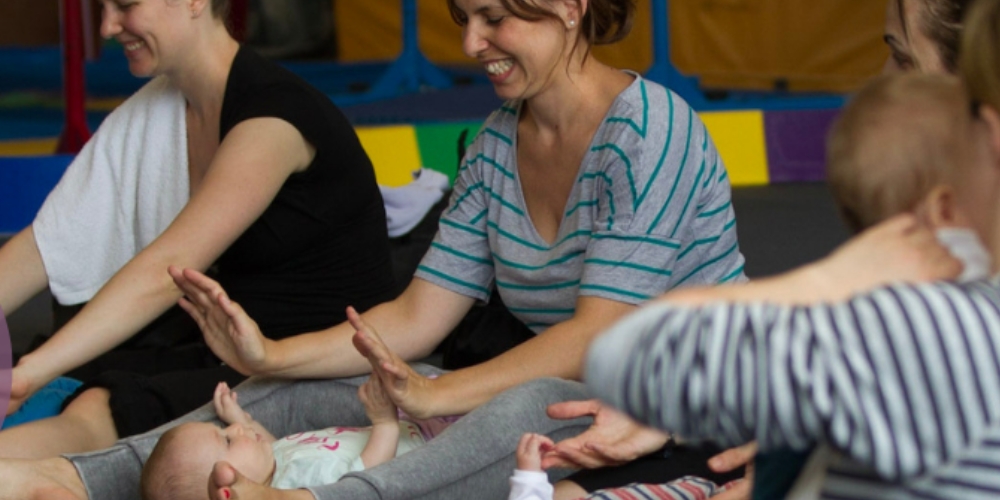
Preparing for a successful baby gymnastics session involves setting the stage for fun, safety, and growth. Here are some helpful tips to ensure your baby's gymnastics experience gets off to a great start:
A great baby gymnastics practice requires precise timing. Make sure your infant is well-rested so they may engage with vigour and excitement. However, avoid arranging the session after eating since a full stomach might cause pain during vigorous activity. Aim for a meal 30 minutes to an hour before the workout to find the correct balance.
Dressing your child in comfortable clothing is critical for their safety and happiness. Choose soft, breathable apparel, such as onesies, leggings, and nonslip socks. These clothes allow for effortless mobility while lowering the danger of discomfort or overheating. Remember, the objective is to provide your baby with a secure and pleasant environment to explore and play.
During a baby gymnastics practice, a well-prepared diaper bag is your lifesaver. Pack diapers, wipes, and a change of clothes in case of an unforeseen accident or spill. Include any special supplies your baby may require, such as a pacifier, a favourite toy, or a small snack if they're ready for solids. Having these items on hand guarantees that you are prepared for any emergency.
Arriving at the gym a little early serves several functions. For starters, it helps your kid to adjust to the new surroundings, lowering anxiety gradually. Second, it lets you finish the check-in process slowly and without hurrying. Finally, it helps you settle down, become acquainted with your surroundings, and establish a sense of comfort for you and your kid. Arriving early sets the tone for the meeting.
Participate actively in the session while also encouraging your child's freedom. Allow children to explore and experiment with things independently when it is safe. This boosts self-esteem and a sense of accomplishment.
Bring a camera or smartphone to record important moments throughout the session. These memories will be treasured, and you can share them with friends and family. Just don't get too caught up in shooting images; being present at the moment is vital.
Meet other parents throughout the session. Share your thoughts, ideas, and tales. Creating a network of supportive parents may be beneficial, and your shared experiences can lead to new ideas and connections.
Be bold and ask the teacher for clarification or help on activities. They are available to assist you and can provide information on your baby's progress and development. If you have any issues or questions, now is the time to express them.
Maintain an optimistic attitude, even if your child is having a bad day. Babies are unpredictable, and only some sessions will go as planned. Approach problems with patience and a smile, and remember that the purpose is to have fun while supporting your baby's development.
After the session, give your kid a sip of water and a small snack, especially if it is physically demanding. This helps them regain energy and stay hydrated.
If your baby perspired during the session, change them into new clothing and diapers as needed. This keeps them comfortable and avoids skin irritations.
Take a minute to ponder about your baby's session. Share your ideas and feelings regarding the enjoyable activities you both participated in. This post-session conversation strengthens your bond.
Throughout the session, celebrate your baby's accomplishments, whether a successful crawl or a fun engagement with gym equipment. Applaud their work and provide positive reinforcement to help them feel more confident.
Allow your baby some rest time. They may be exhausted after the session, so create a relaxing setting to decompress, nap, or engage in calmer activities.
Remember, baby gymnastics is a journey more than physical development; it is a holistic experience that includes your baby's development, confidence, and the priceless moments you have together.
Here are some important reminders to help your infant succeed in gymnastics:
Creating a consistent routine for gymnastics lessons might help babies feel more comfortable and confident in the gym. This constancy creates confidence and eagerness for the events ahead. Incorporating gentle exercises and motions into regular activities at home can also reinforce skills gained in class and give opportunities for bonding.
Ensure your baby's activities are appropriate for their age and developmental stage. You may progressively add more sophisticated movements and difficulties as your baby develops.
During gymnastics classes, your baby's safety should always come first. Pay close attention, abide by the safety rules, and confirm that the gym has the necessary safeguards.
Usually, you don't need to carry any tools or accessories. Age-appropriate toys and equipment will be available at the gym. However, a diaper bag with necessities like diapers, wipes, and changing clothes could be a good idea.
Sessions for baby gymnastics can take anywhere from 30 minutes to an hour, depending on your child's age and attention span.
Babies can have off days, too! It's normal if your infant seems uninterested or fusses throughout a session. Later, you can give it another shot. Making it a nice and pleasurable experience for them is the key.
Gentle stretches, crawling movements, and tummy time may all be incorporated into your everyday routine to continue gymnastics-inspired activities at home. Use soft cushions or mats to facilitate safe play and promote mobility and exploration.
So, there you have it, the world of baby gymnastics in all its tiny, tumbling glory! The joy of those first rolls, unsteady crawls, and triumphant tumbles is more important than merely doing exercise. It's about the relationship you're developing, the self-assurance you're growing, and the laughing you're exchanging.
Let's keep it real. In baby gymnastics, flexibility and consistency go hand in hand. Your child may not always be all in, and that's alright. Other times, they may want to stay out of the action.
Remember that we're not after Olympic gold here; we want happy, healthy infants. Safety must always come first, so watch out for your little acrobat and ensure the gym does everything possible to keep everyone safe.
But most importantly, savour the moments. Cherish the giggles, the hugs, and the countless photo ops. This isn't just a gymnastics class; it's a love-filled adventure you and your baby are embarking on together.
So, tumble forward, laugh often, and embrace the joy of baby gymnastics – it's a journey you'll treasure for a lifetime.
As a parent, you can't help but think, "When's the right time to introduce my baby to the exciting world of gymnastics?" Parenthood is a journey packed with innumerable questions and choices, each contributing to your child's growth and development. Regarding early physical exercise and the enthralling world of gymnastics, you are beginning a journey that will pleasantly mold your baby's future.
Gymnastics is more than simply flipping and jumping; it's about creating a love of movement, instilling a feeling of balance, and promoting cognitive and social growth from the beginning. So, whether you want to see your child as a future balancing beam superstar or offer them a happy outlet for their limitless energy, we're here to reveal the secrets behind when, why, and how to introduce your child to the enthralling world of gymnastics.
So, let us jump in, explore, and uncover the wonders that await you and your small tumbler!
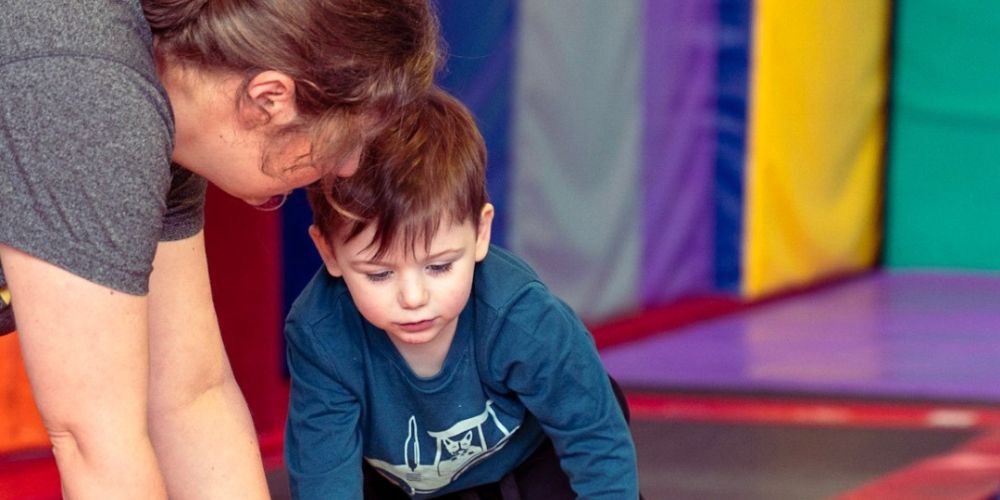
I know what you're thinking: "Exercise for babies? Really?" But believe me when I say there's some major power behind those little movements. Early physical exercise is more than simply keeping your baby entertained; it is also about preparing them for a lifetime of health and happiness. Those cute wiggles and giggles? They're laying the groundwork for strong muscles, flexible joints, and the ability to stay active.
Early physical exercises are similar to going to the gym for your baby's developing motor abilities. As they squirm, roll, and reach for items, their muscles, bones, and nervous systems engage, laying the groundwork for future physical achievements.
Physical activity is more than simply exercising muscles; it is also a brain-building extravaganza. When your baby reaches out to hold a toy or pursues a moving item, they connect what they perceive with what they do. This technique, known as hand-eye coordination, prepares the path for improved cognitive abilities later in life.
Consider the world through your infant's eyes - a kaleidoscope of fresh experiences! Physical activities stimulate their senses, ranging from the tactile feeling of touching various textures to the visual delight of colored items. This sensory inquiry is not just exciting; it is also building the framework for future learning and comprehension.
We all know how a good workout can raise our emotions; newborns are no exception. Physical activities cause the release of endorphins, which are natural mood enhancers, resulting in a happier and more happy infant. Whether it's the thrill of bouncing or the delight of tummy time, these activities help your baby's mental well-being.
Building a house requires a firm foundation, and your baby's body needs the same. Early physical exercises help to build strong muscles and bones. Tummy time and moderate stretches help your baby develop the strength required for future milestones such as crawling, standing, and walking.
So, when is the ideal age to introduce your baby to the magic of gymnastics?
Timing is important when introducing your lovely child to the thrilling gymnastics world. Consider your baby's growth stages as a personalized gymnastics timer. Those charming efforts at lifting their heads during tummy time and rolling over around 4 to 6 months are glimpses of their motor abilities in action - a preview of the flips and tumbles to come. As they get closer to 8 to 12 months old, their cognitive abilities peek through as they reach for and examine things, building the mental framework for their gymnastic routine. By 12 to 18 months, they're enjoying social interactions with laughing and babbling, laying the groundwork for crowd-pleasing performances.
Consider your baby to be a tiny superhero getting ready for some gymnastic action. They offer subtle signals that suggest they're getting ready to take action in infant gymnastics.
Gymnastics is more than simply moving; it's also about having fun. Here are some indicators that your baby is getting ready to have some gymnastic fun.
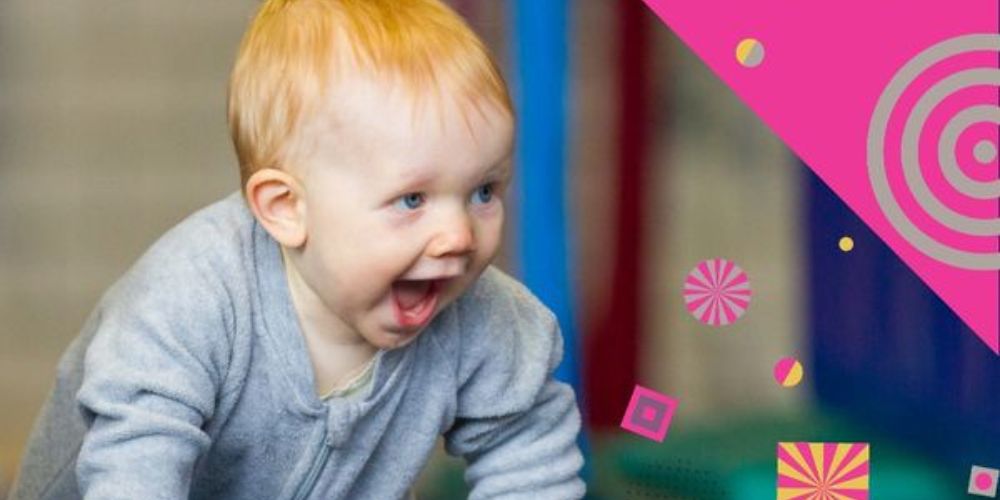
Choosing the best gymnastics program for your child is like finding the missing puzzle in their early experiences. Let's look at how to choose a program that fits your baby's developmental stage and parenting choices.
Consider this a treasure hunt: you're looking for a gym that's a good fit for your baby's gymnastics adventure.
Consider this phase similar to trying on several costumes to discover which best suits your kid.
Enrolling your child in a gymnastics class is similar to packing for an exciting trip.
It is natural for newborns to be nervous in unfamiliar situations. Allow them some time to acclimate and observe. Holding them and consoling them might help them gain confidence. They'll get more at ease and excited with each class.
Babies have distinct tastes. Don't be concerned if your infant does not instantly take to gymnastics activities. Maintain a lively and enjoyable mood. Patience and mild encouragement can sometimes gradually ignite their attention.
Baby gymnastics lays the foundation for a positive relationship with physical activity. While it's not guaranteed that your baby will become a gymnast or athlete, early exposure to movement and play can foster a lifelong appreciation for staying active.
Absolutely! Many gymnastics programs are inclusive and can be adapted to accommodate babies with special needs. It's a good idea to communicate with the program coordinators beforehand so they can tailor the activities to your baby's needs and comfort.
As parents, we shape our children's early experiences, and baby gymnastics provides a blank canvas with limitless possibilities. It's a blank canvas that stimulates physical and cognitive development and produces memories that endure a lifetime. Each step of their trip, from the first victorious raise of their head to the laughs and wiggles of exploration, is a brushstroke in the masterpiece of their voyage.
So, whether your baby is already a pint-sized gymnast in the making or you're considering enrolling them in their first class, remember that you're opening the door to a world where they learn to stretch their bodies, expand their minds, and embrace the magic of movement.
And, speaking of entering this lovely world, our gymnastics center eagerly welcomes your little star. We encourage you to join our gymnastics family with skilled teachers, a safe and loving atmosphere, and a commitment to creating a lifetime love of physical exercise. Let us celebrate in every flip, tumble, and joyous discovery. Join us at Skylark Sports and see your child's gymnastics career blossom most magically!
You may have been enjoying those priceless moments when your baby's chubby legs kick with pure excitement or when their little hands seek out adventures of their own. These seemingly basic actions are the foundations of extraordinary physical and intellectual development. And that's where baby gymnastics may come into play, helping us harness these early movements to lay a strong foundation for your baby's active future.
However, why start your baby off in gymnastics? It's a wonderful question, and we have the answers right here. These exercises provide many advantages, from honing motor skills to improving balance and coordination.
But we can hear you! You might wonder, "What are the best routines my baby can start with?" Don't worry! That's exactly what we're here for! In this blog, we're giving you some of the best routines to kickstart your baby's gymnastics adventure most delightfully.
Let's begin!
Baby gymnastics is more than just charming wiggles and mini-twirls—it's an enthralling adventure that lays the groundwork for your child's physical, cognitive, and emotional development. Consider a world where your baby's natural motions are the foundation for a healthier, more coordinated future. That's what infant gymnastics is all about!
At its heart, baby gymnastics consists of various engaging exercises and motions to stimulate your baby's senses, build their muscles, and improve their general motor abilities. It's like a joyful dance of discovery that enables your baby to explore the powers of their body in a secure and supportive setting.
When exposing your baby to the fun of gymnastics, providing a safe setting is still of the utmost importance. Introducing gymnastics to your little ones should be guided by a strong emphasis on safety, ensuring your child's experience is pleasurable and secure.
The basis of your baby's gymnastics adventure is creating a secure atmosphere. Consider your baby's excitement when they learn new movements. Inspect the workout area to ensure that these moments are as carefree as they are pleasurable. Remove any potentially dangerous objects, such as sharp objects or tiny items that might be eaten. A secure atmosphere sets the scene for your baby's experience, like a director ensures a faultless performance.
Before the tumbles, twists, and cute stretches begin, a little planning will make your baby's gymnastics experience memorable. Consider it like preparing all of the props for a wonderful show. Here's how to get your baby ready for a fun adventure into baby gymnastics.
Consider when your baby is all smiles and coos, completely engaged and eager to go. That is the sweet spot for a baby gymnastics! Choose a time when your infant is well-rested, attentive, and interested in their surroundings. Like a star performer on stage, your child will be at their best when they are in the mood to shine.
When it comes to baby gymnastics clothing, comfort is essential. Consider dressing your child in elastic, soft clothes that allow them to move freely. Forget about elaborate costumes; simple onesies or warm clothes will suffice. Consider allowing your infant to show off their moves without any clothing constraints!
Consider your baby's gymnastics area a blank canvas ready for their creative moves. Remove any obstacles to their style, such as toys, furniture, and anything else that might get in their way. This spacious environment allows your infant to explore without restriction.
Your excitement is like the applause that pushes your child's gymnastics performance. Babies take up your energy, so be ready to encourage them with smiles and words of encouragement. Like a supportive audience, your positivism sets the tone for a delightful and engaged encounter.
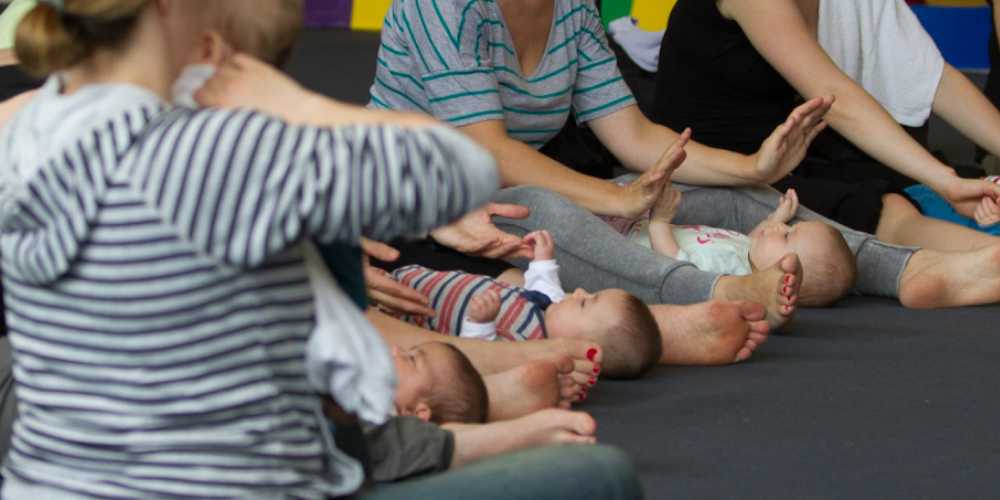
Prepare to see your baby's first gymnastics moves that will melt your heart! These easy-to-learn activities are like playful secrets that unlock your baby's potential and establish the groundwork for a future full of coordination and confidence. Let's dive right into the magical world of infant gymnastics!
Watch your baby's laughter as they begin their tummy time journey. Tummy time twists are an excellent approach for children to improve their upper body and neck muscles. Place your infant on their belly and gently move their head from side to side. It's like a mini-dance routine that strengthens their muscles and encourages sensory exploration!
Imagine your baby's initial efforts at rolling over like a little acrobat! Place your infant on their back and gently move them to one side. It's a cute approach to help them with their balance and coordination. Expect their cute attempts to steal the show!
Imagine your baby's legs reaching for the stars! Gentle leg lifts are fun to build your baby's lower body strength. Lay your infant on their back and softly grip their ankles before slowly lifting their legs. It's like allowing their small legs to expand and shine!
Imagine your baby's excitement when they grab for their favorite toy. This activity improves their hand-eye coordination and gripping abilities. Encourage them to grasp a colorful toy just out of their reach. It's a fun game that's both entertaining and useful!
Observe your baby's determination as they master the art of crawling. This workout promotes coordinated movements while also strengthening their core muscles. Guide your baby's knees back and forth in a crawling motion. It's like assisting them in mastering their own gymnastics routine!
Your baby's journey into baby gymnastics is an evolving story of development and exploration. Keeping a close eye on your baby's development while remaining adaptive is comparable to fine-tuning an ever-changing symphony. Let's look at how you can be a guide on this exciting journey.
It is fascinating to watch your baby's facial expressions communicate the narrative throughout their gymnastics routines. Observe how they respond—are they interested, enthused, or apprehensive? These cues provide insightful information about their preferences and areas where they can benefit from more support.
Every action your baby does is a step toward the next accomplishment. Honor each accomplishment, whether it be a hesitant roll or a victorious crawl. As a conductor would when honoring each note in an orchestra, you should welcome and rejoice in each development your child makes.
Your baby's gymnastics routine changes throughout time, much like a dance. Changes in capacities accompany growth, making adaptability a crucial factor. Adjust the exercises to fit your baby's current developmental stage if necessary. For instance, you may add dynamics to tummy time twists as their neck strength develops.
Consider yourself a guiding light, illuminating your child's gymnastics path. Your energetic presence, warm smiles, and encouraging words build a constellation of support. Create a positive and reassuring atmosphere to foster your baby's confidence and willingness to explore. Your contribution, like that of a cheering squad, adds to the beauty of the event.
When your infant demonstrates improved neck strength and a developing interest in movement, it is ideal to introduce them to baby gymnastics. This usually starts between 2 and 3 months of age.
Absolutely! The movements used in baby gymnastics are meant to be delicate and safe. But always put safety first by removing potential hazards, using the proper tools, and checking your child's physician before beginning new habits.
Use rhymes, music, and vibrant pictures to excite the workouts. Let your excitement shine because it is contagious!
Use your phone or a diary to record your child's developmental milestones and responses to activities. It's an excellent approach to acknowledge their development.
Remember that baby gymnastics aims not to produce mini-Olympians but to promote a love of movement, exploration, and learning. Your assistance as a guide, cheerleader, and source of comfort is priceless. You're building a space for your baby to thrive one lovely habit at a time by emphasizing safety, assessing progress, and modifying as they develop.
You're watching a symphony of development as you watch your baby's first rolls, soft stretches, and victorious crawls. Every modest accomplishment and every delighted smile bears witness to the amazing adventure of infant gymnastics.
So, throughout this amazing journey, let the melodies of laughter, the dance of exploration, and the beat of progress resound. Enjoy every second, remember to mark each accomplishment, and treasure the relationship you are building with your child. With baby gymnastics, you're not just guiding your baby's movements—you're shaping their future, one delightful movement at a time.
Let's get into a topic at the core of every laughing, inquiring, and shaky step of your child's journey - movement and play. We've all heard that these two factors are the secret ingredients in a child's growth formula. But here's the twist: there are several approaches to them, and that's what we're here to discuss.
Think about this: on the one hand, we have a world of little gym classes with organized routines and skill-building from the start. On the other hand, traditional playtime is a carefree, no-rules zone where creativity and discovery reign supreme.
Now, I understand that, as parents, you want to make the greatest decisions for your children. It's as if you're laying the groundwork for their future immediately. But how can you determine which course to pursue when there are so many options? Is the structured world of baby gymnastics the way to go, or is giving your child the freedom to play traditionally equally important?
Let's find out!
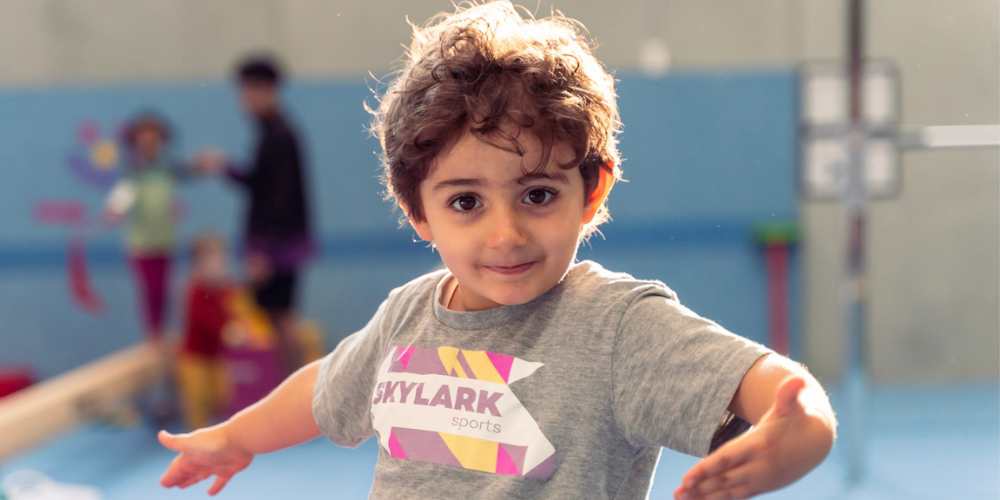
Baby gymnastics, often known as infant gymnastics or baby gym, is a fun and participatory physical training program for infants and toddlers. It's like a miniature version of Olympic gymnastics but customized to the developmental requirements of extremely young children.
Baby gymnastics aims to help newborns develop motor skills, coordination, and general physical development in a fun and safe setting. It's not about turning them into little Simone Biles or Nadia Comăneci overnight but about allowing them to explore movement, grow strength, and gain confidence.
Gentle stretches, tummy time exercises, rolling, crawling, and simple motions that encourage reaching, gripping, and holding things are likely to be seen in a baby gymnastics class. Soft mats, colorful accessories, and cushioned equipment may also be present to stimulate newborns' senses and curiosity.
It's not about rigorous training or pushing babies over their limits. Rather, it is about establishing a pleasant and joyful experience that supports physical development while bonding with caregivers and socializing with other infants and parents in a social context.
First, baby gymnastics isn't just about flips and tumbles (we'll save those for when they're older!). It's about giving your little one a head start in the physical development game.
Baby gymnastics promotes a variety of motions, such as rolling, crawling, and reaching. These motions are excellent for your baby's physical development since they aid in developing strength, balance, and coordination. They're effectively setting the foundations for more sophisticated motions like walking and even running later on as they practice these core abilities.
We use colorful mats, soft toys, and different textures in baby gymnastics to stimulate your baby's senses. These sensory encounters are critical for their cognitive development. When newborns touch, feel, and engage with diverse textures and objects, they stimulate their brain growth and get a greater understanding of their surroundings.
Baby gymnastics courses are a great way to expose your child to social interactions in a safe and supportive environment. They get to observe and interact with other infants, which helps them develop social skills such as watching and mimicking. Furthermore, as parents, you are part of a community where you can share stories and suggestions and encourage one another on the wonderful adventure of parenthood.
Imagine your baby's delight when they roll over or reach for a toy! These modest victories are huge confidence boosts. Your baby will learn they can attain things by performing these moves in baby gymnastics. This early self-assurance provides a solid basis for their self-esteem as they mature.
Baby gymnastics is more than just physical development; it's also about developing your relationship with your child. You are not only giving kids vital experiences, but you are also making precious memories together via shared activities. The laughter, cuddling, and discovery you share throughout these lessons build a unique and profound bond.
When it comes to baby gymnastics, safety comes first. Gymnastics programs are carefully designed to ensure that the activities and equipment are age and developmental stage suitable for your baby. You can relax knowing your baby may explore, move, and engage in an environment designed for their needs and safety.
Like every adult, every child is unique and grows at their speed. We recognize each baby's unique growth in baby gymnastics. Some people may respond immediately to specific moves, while others may require more time - and that's all OK! We are committed to assisting each baby on their journey and assisting them to thrive in their unique way.
Traditional playtime refers to the sorts of play activities children have enjoyed for decades before the introduction of contemporary technology and digital entertainment. It entails participating in basic, imaginative, hands-on activities encouraging creativity, social contact, and physical activity.
Building with blocks, playing board games, creating art with crayons or paints, pretending with dolls or action figures, exploring outdoor places, riding bikes or scooters, playing tag or hide-and-seek, and participating in make-believe situations are all examples of traditional playtime. These activities frequently rely on the use of one's imagination as well as direct interaction with the actual surroundings and other kids.
Traditional playtime encourages youngsters to use their imaginations to construct their unique worlds. Building a fort, playing with dolls, or sketching helps children develop their imagination and unique situations, boosting their artistic and inventive thinking.
Traditional playtime emphasizes socializing through games such as tag or cooperative tasks such as building together. Children learn to share, take turns, communicate, negotiate, and work as part of a team as a result of these interactions, laying the groundwork for effective social skills.
Many traditional play activities include physical movement, which helps kids enhance both fine and gross motor abilities. Threading beads into a string, climbing on playground equipment, or painting with crayons are all activities that help youngsters improve their coordination and agility.
Traditional playtime activities frequently bring difficulties that need problem-solving and critical thinking. Learning how to build a tower with blocks or solve a problem allows youngsters to think rationally, strategize, and make decisions independently, which promotes cognitive growth.
Traditional play allows youngsters to express and control their emotions positively. It helps kids process feelings and experiences healthily and imaginatively, whether playing out situations with toys or engaging in imaginative play.
With the dominance of screens in modern society, traditional playtime provides a welcome diversion from electronic gadgets. It encourages children to interact with their surroundings, improving their sensory experiences and guaranteeing a more balanced relationship with technology.
Traditional play activities frequently build enduring memories for youngsters that they carry into adulthood. Building sandcastles on the beach or playing board games with family occupy a particular place in a person's heart and contribute to nostalgia and connection with the past.
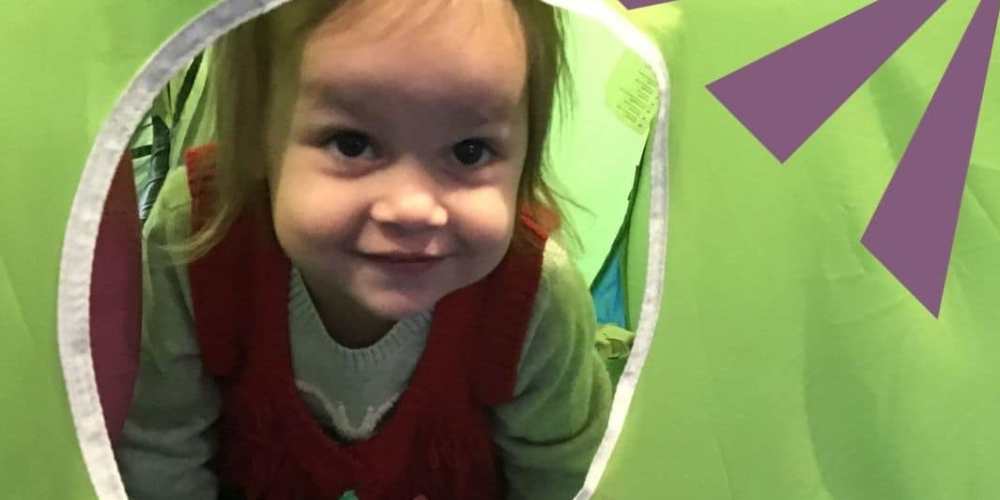
Let's explore the key differences between baby gymnastics and traditional playtime:
Baby Gymnastics
Traditional Playtime:
Parents, there are a few important points to keep in mind when considering baby gymnastics and traditional playtime for your little ones:
Balancing scheduled activities such as baby gymnastics and unstructured conventional playing is essential. Both techniques have distinct advantages, so select a combination that meets your child's developmental requirements and your family's tastes.
Take note of your child's hobbies and preferences. Some children flourish in regulated situations, while others shine when they are allowed to be creative. Customize your approach to what interests and thrills them.
Keep in mind that each child develops at their rate. While baby gymnastics has defined aims, traditional playtime respects your child's natural development, encouraging self-discovery and creativity.
Baby gymnastics and traditional playtime both provide chances for companionship. Participate in their play and learning through mild motions or accompanying them in imaginary adventures.
Above everything, prioritize your child's happiness and well-being. Activities should be fun and age-appropriate to encourage a healthy relationship with physical exercise and play.
Consult your physician before enrolling your kid in any organized activity, such as baby gymnastics. Communicate with other parents for ideas and experiences to help you make decisions.
Be willing to change your approach as your child matures. What worked at one point may no longer work when their interests and developmental demands change.
Make sure play has a purpose, whether in class or during unstructured play. It is about being active and offering possibilities for growth, engagement, and skill development.
Baby gymnastics and conventional playtime can provide great bonding opportunities. Cherish your time connecting with your child, building a deep and enduring bond.
Remember that your child's early years are a voyage of discovery and progress. Enjoy seeing them explore, learn, and develop through guided activities and unstructured play.
Consider your child's developmental requirements, interests, and family values. You might also talk to your physician and get advice from other parents who have used both baby gymnastics and typical playtime.
Neither strategy is fundamentally superior; each has unique benefits. Traditional playtime fosters creativity, social skills, and overall well-being, whereas baby gymnastics can give targeted physical skill development. A mix of the two can be a well-rounded strategy.
Baby gymnastics lessons are typically geared toward infants and toddlers. They can begin as early as a few months old and continue until the child reaches preschool age. The age range varies according to the program and its focus.
Traditional playtime, including running, climbing, and exploring, can contribute to physical development. While it may not be as specific as infant gymnastics, it promotes gross motor skill development.
Baby gymnastics combined with traditional playtime gives a wide range of options in terms of parental decisions. A mixture of both approaches that promote your child's development in many ways is the greatest method to determine what is best for them.
Baby gymnastics is similar to performing exercises to strengthen your baby's body. Playing traditional games and toys involves utilizing your imagination to have fun.
Finding a particular balance between these two is like choosing between them. It resembles blending structured learning with unstructured, imaginative play. This combination fosters your child's holistic growth and education.
Remember that the goal is to discover what your child likes and what fosters their growth. Growing up is thrilling and full of memories, whether trying out new techniques in baby gymnastics or making up stories in traditional play.
And if you are looking for the best guide to kickstart your precious one's gymnastic journey, do not hesitate to grab your phone and talk to your trusted gymnastic coach. We will be more than willing to answer every question.
As a new parent, you're overwhelmed with many alternatives for keeping your child active and interested.
As you navigate through the whirlwind of diaper changes, late-night feedings, and adorable baby giggles, you're likely facing many choices – including how to keep your little one active and engaged. In a world where options seem endless and advice pours in from all directions, you might have stumbled upon the debate of baby gymnastics versus baby yoga. It's like comparing apples and oranges, which are deliciously healthy yet have different tastes.
So, let's dig into this interesting topic and look into the advantages and disadvantages of each, leading you to make an informed decision that matches your baby's personality and your family's lifestyle. After all, whether your bundle of joy does tummy time twists or pint-sized postures, the most important thing is creating lovely moments full of love, movement, and smiles.
Baby Gymnastics is an organized and entertaining developmental movement program for newborns and young children to promote their physical talents and motor skills. Baby gymnastics increases physical strength, flexibility, balance, and spatial awareness via carefully developed exercises and activities.
In a normal baby gymnastics session, your babies are guided through various activities that stimulate the development of important muscle groups. Stretching, rolling, crawling simulations, tummy time routines, and controlled reaching and grasping activities are common. The classes are led by qualified instructors who consider each baby's specific developmental stage.
It's extremely important to remember that baby gymnastics lessons are often created to be soft and age-appropriate, emphasizing healthy growth rather than rigorous training. As with any baby's physical exercise, safety, and comfort come first, and parents or other caregivers actively participate in leading and supervising the activities.
Baby yoga is a gentler type designed just for your little one. Consider comfortable stretches and cute positions to help your baby relax, become more flexible, and form a particular bond with you. Baby yoga sessions are about establishing a peaceful and caring environment where you and your baby may experience mindful movements and pleasant moments.
You'll discover activities geared to your baby's requirements in these courses. There will be gentle stretches for infants, micro yoga postures for their tiny bodies, and even some light massages to help them feel all snug and comfortable.
The charm of baby yoga lies not only in the practices but also in the quality time you spend with your child. You'll both feel better, and it may even lead to improved sleep and reduced fussiness for your kid. Plus, those beautiful baby-sized stretches and postures are impossible to resist!
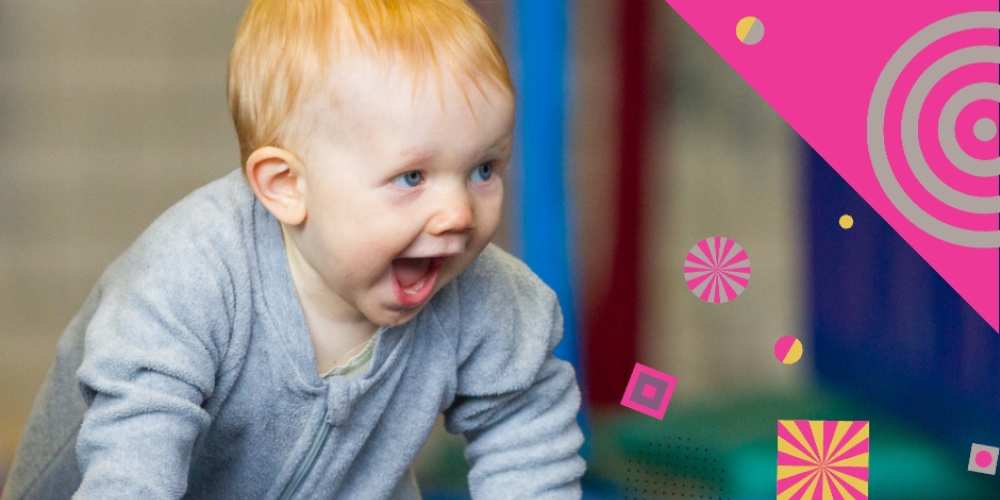
Baby Gymnastics and Baby Yoga are great ways to nurture your baby's growth while strengthening the parent-child relationship. While both hobbies have various advantages, they have specific traits that distinguish them. Let's compare and contrast Baby Gymnastics and Baby Yoga to assist you in making an informed decision based on your baby's requirements and your family's preferences.
Baby Gymnastics: Physical development is emphasized heavily in baby gymnastics. It consists of a sequence of planned motions and exercises that focus on certain muscle groups. These exercises improve muscle strength, coordination, and general motor abilities. Rolling, crawling simulations, reaching for items, and tummy time exercises are common in baby gymnastics programs. The objective is to assist newborns in meeting developmental milestones and laying a solid foundation for physical growth.
Baby Yoga: Baby yoga, on the other hand, emphasizes relaxation, flexibility, and sensory awareness. Baby yoga programs use gentle movements and postures to improve flexibility in the baby's muscles and joints. Infant yoga sessions frequently use stretching, postures, and massage methods to help the baby's physical comfort and relaxation.
Baby Gymnastics: Although bonding is a natural part of any caregiver-baby interaction, baby gymnastics programs often emphasize the physical than the emotional aspects of growth. These programs allow parents or other caregivers to interact with their newborns via amusing movements, but the primary goal is to develop the baby's physical skills.
Baby Yoga: In baby yoga, the development of an emotional connection between the caregiver and the child is given priority. It promotes peaceful conversation and group relaxation. Baby yoga classes produce a serene and caring atmosphere where the caregiver's presence, touch, and calming voice enhance the baby's sense of security and well-being.
Baby Gymnastics: The movements used in baby gymnastics are often inspired by the infant's developmental milestones. Activities that enhance motor skills development include those that imitate motions like rolling, crawling, and reaching. These motions enable the infant to discover their physical prowess and progressively develop control over their movements.
Baby Yoga: Focusing on flexibility and relaxation, baby yoga encompasses a variety of gentle stretches, postures, and motions. These movements may include stretches that resemble yoga postures and rhythmic rocking and swaying that calms your baby.
Baby Gymnastics: Classes for baby gymnastics often have a joyful and lively environment. They promote active play and exploration, frequently including colorful accessories and hands-on games stimulate the baby's senses and promote mobility.
Baby Yoga: The ambiance is calm and serene during baby yoga lessons. The goal is to create a serene atmosphere that encourages unwinding and mindfulness. The caregiver and the infant benefit from a sense of peace through dim lighting, calming music, and soft movements.
Baby Gymnastics: Enhancing physical ability is infant gymnastics' main objective in terms of development. This involves enhancing physical fitness, coordination, and spatial awareness. The exercises in baby gymnastics lessons are specifically created to assist the baby's developmental milestones and foster the growth of their general motor skills.
Baby Yoga: The goal of baby yoga is to promote both physical and emotional growth. While encouraging physical comfort and flexibility, it also strongly emphasizes establishing a sense of relaxation and emotional connection for the infant and the caregiver.
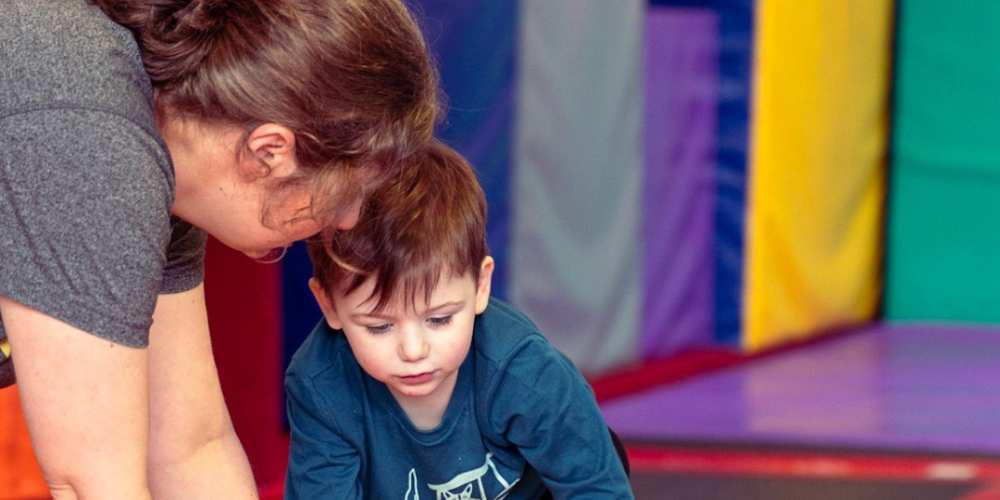
Choosing the best method for nurturing your baby's growth is an exciting yet careful decision. Baby Gymnastics and Baby Yoga provide amazing chances for connection and learning, but how do you know which is best for your child? Let's look at a few important points to help you make a smart choice that meets your baby's needs and your family's preferences.
Consider your baby's personality for a moment. Is your child lively and inquisitive, always looking for new experiences? Baby Gymnastics may be a good fit since it provides a dynamic atmosphere for your baby to explore and improve their motor skills. Baby Yoga may provide a tranquil area for relaxation and bonding if your baby is calmer and prefers gentle interactions.
Consider your priorities for your baby's growth. Baby Gymnastics may be the way to go to improve your physical strength, coordination, and motor abilities. If you want to encourage emotional connection and relaxation, Baby Yoga is a thoughtful method that fosters physical and emotional well-being.
Consider how much time you want to spend with your infant. Baby Gymnastics promotes liveliness and movement, while Baby Yoga promotes peaceful bonding via gentle touch and relaxation. Consider which strategy best fits your goal for shared experiences and connection.
Take into account your baby's developmental stage. Baby gymnastics frequently parallel developmental stages, making it appropriate for newborns just starting to explore movement. Baby Yoga, emphasizing gentle stretches and relaxation, is adaptable to newborns and infants of all ages.
Consider your tastes and degree of comfort. Do you enjoy playing sports and moving around? Or do you picture a tranquil setting for private moments of intimacy? Following your instincts, you can choose a strategy based on your parenting style.
To obtain a feel for the classroom environment and teaching style, attend sample classes or talk with the teachers. If you enjoy being active and lively, a Baby Gymnastics class is up your alley; if you value peace, a Baby Yoga session is more your style.
Always keep in mind that no one solution works for everyone. You may always try both strategies to see how your baby reacts. They could enjoy the diversity or develop a definite preference over time.
Give your baby's health and safety priority. Whichever strategy you use, ensure the activities are appropriate for your child's age, health, and comfort level.
Both possibilities are viable. Attending a class guided by an experienced instructor may offer direction and guarantee proper skills. Simple Baby Gymnastics exercises may be included in your regular home interactions.
The teacher will walk you through the exercises if you're in a class. Pay attention to how your baby feels and reacts when practicing at home. They appear content and interested, so you're on the correct course.
The key is consistency. Starting with a few brief sessions each week and progressively increasing the frequency might be a suitable strategy as your infant ages.
Baby emotions vary. Thus, not every session will be successful. You can stop and try again later if your baby appears disinterested or upset. Keep the encounter pleasurable for both of you at all times.
In the dynamic stage of parenting, the decision between Baby Gymnastics and Baby Yoga is a unique road built by your baby's personality and your family's objectives. Each activity provides a distinctive starting point for your baby's development, offering a blank canvas for bonding, growth, and shared moments of delight. Remember that there is no one-size-fits-all solution; rather, it is a wonderful journey of discovery driven by your baby's signs and your loving instincts.
So, whether your days are filled with energetic tumbles, laughter, stretches, calm poses, and peaceful hugs, the amazing parenting experience continues. Embrace the choices that fit your family's rhythm, and remember that the love, care, and commitment you put in your baby's early years shape the unique tale of their life. May this delightful journey be filled with cherished memories and the feeling of wonder that only the path of parenthood can deliver.
Baby gym classes are an enjoyable and interactive approach for babies to improve their motor skills, coordination, and spatial awareness. These lessons usually include exercises like crawling, balancing, and playing with toys. Baby gym programs, however, allow parents to bond with their children in addition to physical growth.
Bonding with your child during baby gym sessions is essential for their development. When parents participate in these programs with their children, they provide a safe and secure environment for them to explore and learn. Furthermore, bonding might benefit a child's emotional and cognitive development.
Are you seeking a fun and exciting way to spend time with your children? Look no further than baby gym classes! These sessions not only give excellent developmental advantages for your kid, but they also provide an excellent time for you to bond with your child. In this post, I'll provide some ideas for bonding with your child during baby gym courses.
Bonding with your children during a baby gym session may be an excellent opportunity for you to spend quality time together while simultaneously supporting their physical and cognitive development.
Here are some best tips to help you get the most out of your baby's gym session:
First and foremost, you must engage in the activities during infant gym lessons. These programmes are intended for parents to interact with their newborns, so ensure you participate.
Engagement is another crucial part of bonding with your kid during baby gym lessons. Don't simply sit back and observe; engage with your child!
Get down on the mat with your child and demonstrate how to crawl through the tunnel or balance on the beam. Not only will your babies appreciate your participation, but you'll also have a great time! Make goofy expressions, sing to them, and talk to them. This is an excellent time to learn about your baby's personality and for them to learn about yours. It's also a lot of fun!
Allow your baby to take the lead and explore the baby gym's toys and equipment. Follow their cues and respond to their activities, whether cheering them on as they crawl towards a toy or assisting them in reaching for something that's just out of reach.
Physical contact is a crucial bonding tool. Don't hesitate to offer your infant mild rubs or tickles throughout the session. You may also keep them close to you as they explore the gym by holding them tight or using a baby carrier.
Baby gym courses are an excellent way to engage with your child personally. This is an excellent opportunity to discover more about your child's hobbies, personality, and preferences. You may also utilise this opportunity to enjoy the moment with your child by asking open-ended questions like "What do you think of this activity?" or "How does this feel?" Take in their emotions, watch them play, and enjoy the excellent bond you share with your child.
It is critical to provide positive reinforcement during baby gym lessons to support your child's development and to form a strong relationship with them. When they complete a job, this might be as easy as giving them a high-five or a hug. By complimenting and celebrating your child's accomplishments, you show them that you are proud of them and are there to support them.
If your baby appears overwhelmed or overstimulated, spend a few minutes snuggling with them. This will make them feel safer and allow them to rest before returning to play.
Finally, if you genuinely want to bond with your kid, make baby gym courses a regular part of your schedule. This will not only provide your child with constant developmental advantages, but it will also provide you with frequent opportunities to bond with them. It's also a terrific opportunity to meet other parents and infants in your area!
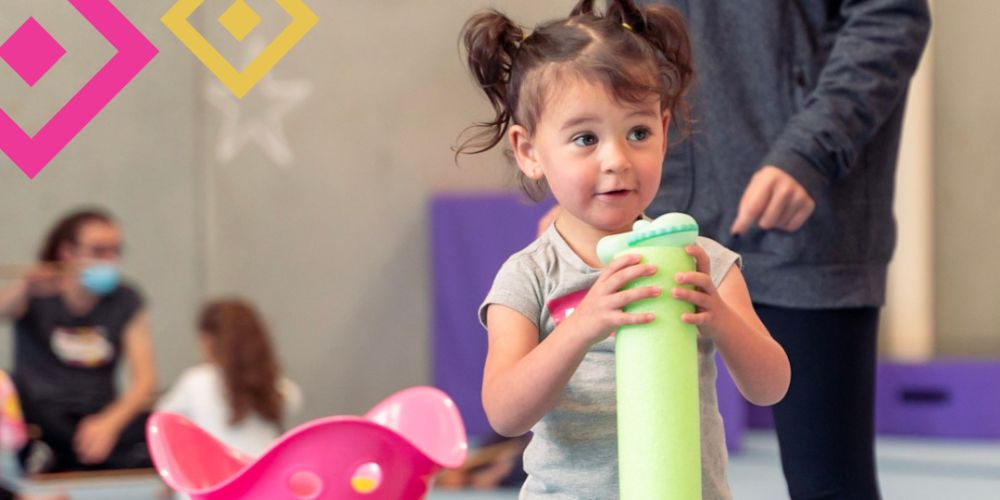
You want the best for your child as a parent, including ensuring their overall growth. Enrolling your child in baby gym programs is one approach to help them develop. These lessons can give several advantages for your child, ranging from physical development to socialisation.
Bonding with your child throughout these lessons is essential for their natural growth. Parents participating in baby gym courses with their children provide a safe and secure atmosphere for them to explore and learn. Furthermore, bonding might benefit a child's emotional and cognitive development.
As discussed in an article published in Psychology Today, playing with your child will help you form a better emotional relationship with them and learn about their preferences. It also aids in developing their social, physical, cognitive, and emotional abilities.
Physical activity-based games can help them enhance their motor and general physical health, and problem-solving, creativity, and imagination-based games can help them build their cognitive skills. Furthermore, playing with other children can help them develop social skills such as sharing, taking turns, and efficient communication.
It encourages conversation and the development of linguistic skills. It also promotes social and emotional growth. Even before they can speak, your baby communicates with you through facial expressions, body language, and crying. It is critical to listen to your child's cues.
While your child needs time to play alone and with other kids without adult supervision, research suggests that playing with parents is equally beneficial. Children yearn for time with their parents. It helps them feel important. Parents are advised to spend frequent time playing with their children.
When your infant grins at you, smile back. When your infant cries, comfort them. Respond to your baby's noises by speaking something back. Discuss what's going on around the two of you.
Try to spend 5-10 minutes playing with your youngster daily. Begin with at least five minutes of focused play. When parents first begin employing praise, description, imitation, and active listening, they discover that it requires significant energy and effort.
It is critical for your child's overall growth to bond with them during baby gym lessons. You may provide a secure and supportive atmosphere for your kid to explore and learn by participating in the activities, engaging with your child, and fostering positive reinforcement.
Baby gym courses are an excellent way for parents to bond with their children while promoting their growth. You may establish a deep and loving link with your kid that will last a lifetime by participating in the activities, interacting with your child, providing positive reinforcement, taking the time to connect, and making it a regular activity.
As a mother, I understand how much we want the best for our children. We always strive to give them the most outstanding care, education, and opportunity to develop and thrive.
Baby gymnastics is one exercise that has grown in popularity among parents. This gymnastics activity is an excellent and all-inclusive sport for many reasons, from learning balance and basic skills from a young age to developing beginner social skills. Overall I highly recommend the sport for young children due to its advantages.
But how early is too early to begin for your babies to start gymnastics? Let us go exploring!
Baby gymnastics, commonly called the baby gym, is an exercise that helps young children improve their motor abilities. Exercises including rolling, crawling, balancing, leaping, and more are included. Baby-specific equipment is typically used in baby gym courses, typically offered in a welcoming and exciting setting.
Classes in baby gymnastics may include specialized apparatus, such as soft mats, foam blocks, and small balancing beams, and are frequently instructed by qualified teachers. The sessions can aid in fostering the physical and cognitive development of newborns and young children since they are made to be enjoyable and exciting for them.
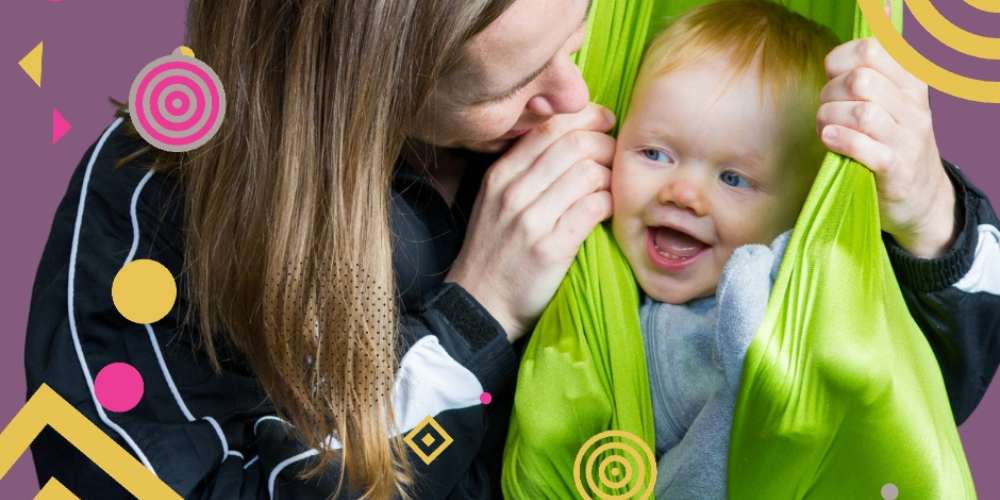
Infants and toddlers can benefit significantly from baby gymnastics. Here are some of the benefits your babies can get with the baby gym:
Exercises used in baby gymnastics include a variety of motions that can support young children's physical growth. These exercises can enhance a child's gross motor, coordination, and balance abilities, which are crucial for a child's general physical development. For instance, rolling and crawling movements can assist in developing the neck, shoulder, and core muscles, whilst swinging and hanging exercises can aid in increasing the strength and flexibility of the upper body.
Baby gym courses allow infants to socialize with adults and other kids, improving their social skills. A crucial part of a child's development is socialization, and baby gymnastics may support this by giving infants a secure and supervised setting in which to interact with others. Babies can learn to share toys, take turns, and interact with other children during baby gym lessons, all of which can help them develop vital social skills they will require.
Parent or caregiver participation in baby gymnastics lessons contributes to developing the kid and parent relationship. The organized exercises allow parents to play physically with their kids and foster a happy, enjoyable environment.
Baby gymnastics can help babies feel more accomplished and more confident. Babies feel pleased and develop self-confidence as they master new skills and movements. This can support the formation of a good self-image and lay the groundwork for further growth. Additionally, baby gym courses allow parents to support and compliment their children, which may help increase their self-assurance and self-worth.
Baby gymnastics is beneficial to a child's cognitive growth. The planned activities allow kids to learn about and explore their surroundings, which promotes the growth of their cognitive abilities.
From an early age, baby gymnastics helps to promote physical fitness and a healthy lifestyle. The structured exercises promote endurance, flexibility, and strength.
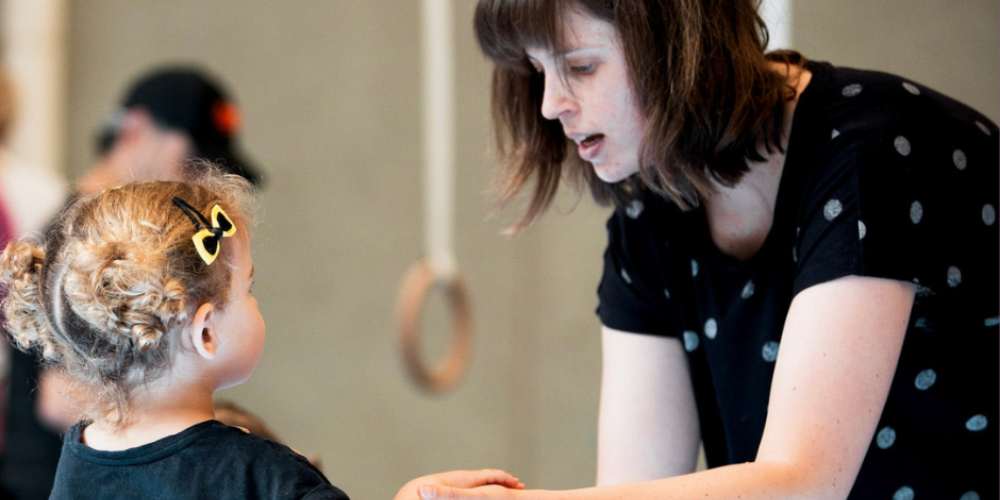
The ideal time to introduce your baby to gymnastics is when they can independently keep their head up and have adequate neck control. It's generally six months old and 2 years old. It's important to understand that every baby is unique and that some may be ready sooner than others.
Babies may often begin gymnastics lessons as early as six months old. Still, we always advise speaking with a physician beforehand to ensure the child is developmentally ready and has no health issues that would prohibit them from participating.
Although baby gymnastics can be a good sport for infants, there are some possible concerns.
During infant gymnastics activities, babies risk falling or getting into mishaps. It's crucial to make sure the workouts are age-appropriate and that your infant is always under supervision. Additionally, it's critical to check that the surface is suitable for infant gymnastics activities and that the equipment is adequately cushioned.
Babies that are overstimulated may experience tension and anxiety. Pay attention to your baby's indications and ensure that neither the atmosphere nor the workouts are too demanding for them. Try a different activity or take a break if your infant looks overstimulated.
In baby gym courses, pushing your infant too hard might result in fatigue, pain, or injury. Pay attention to your baby's indications and avoid pushing them over their comfort zone. Make sure the exercises are suitable for your baby's age and ability level, and always heed the advice of your baby's gymnastics instructor.
Only skilled specialists who understand how to carry out the moves appropriately and securely should do baby gymnastics. The improper technique might result in injuries and other problems.
Because baby gymnastics is not regulated, there are no set rules or expectations for how it should be carried out. Because of this, it may be challenging for parents to know what to consider when selecting a class or teacher.
Several exercises can promote their physical growth and prepare them for their next sporting endeavours.
The following activities may help in your child's physical development:
To get your baby ready for baby gymnastics lessons, you may start introducing them to activities like tummy time, rolling, and crawling. These activities can strengthen your baby's muscles and enhance their balance and coordination.
You may expose your infant to various textures, noises, and settings to excite their senses and promote growth. You may introduce your infant to various sensory objects or expose them to new locations by taking them to several parks or playgrounds.
Before attending baby gym lessons, ensure your baby is well-rested and nourished to give them the energy they need to engage. The physical and mental demands of baby gymnastics activities will be more straightforward for a baby with a good night's sleep and a nutritious diet. It's crucial to watch out for your baby's hydration during baby gym sessions.
Gymnastics encourages total strength and conditioning and promotes stronger, healthier bones. Your child will improve their upper body, lower body, and total core strength due to engaging in body-strengthening gymnastics activities.
Babies who begin gymnastics should be able to crawl, sit up unassisted, and hold their heads up on their own.
Early age of gymnastics participation does not guarantee a child will compete in the sport.
Gymnastics programs are ideal for young children because they support the growth of these skills throughout their most critical developmental stages, including strength, coordination, flexibility, balance, cognitive development, and social and emotional learning.
Baby gymnastics can help your child's physical and mental development. Baby gym lessons may be fun and engaging for your baby to learn and grow, from improving coordination and strength to fostering problem-solving abilities and socializing.
However, it's necessary to be aware of the hazards involved, such as overstimulation or injury, and to take precautions to keep your baby secure and comfortable throughout the exercises. You can assist your little one in developing confidence and reaching their full potential by following the advice of your baby's gymnastics instructor and taking action to jump-start your baby's gymnastics career.
So why not give it a shot and sign your infant up for a baby gym session right now?
When you think about having your child attend gymnastics classes, the first thing that comes to mind is having a blast and having loads of fun. At the same time, they learn how to tumble and flip and walk like a ballerina. Though this may be true, that isn't the only thing you should be concerned about — or at least, not yet.
Gymnastics is a fun and competitive sport that requires physical and mental strength. However, getting your child excited about gym class can take much work. Here are some guides on how to encourage and show support to your little one:
Physical activities are essential for kids, who need to be able to move their bodies regularly. These activities can help them develop their motor skills, coordination, balance and strength.
Physical activities are also essential to teaching your child about safety at home and in the community. Playing with your child regularly (such as playing catch) allows them to learn how to catch appropriately while also practising sportsmanship by ensuring they don't hurt themselves while playing with others.
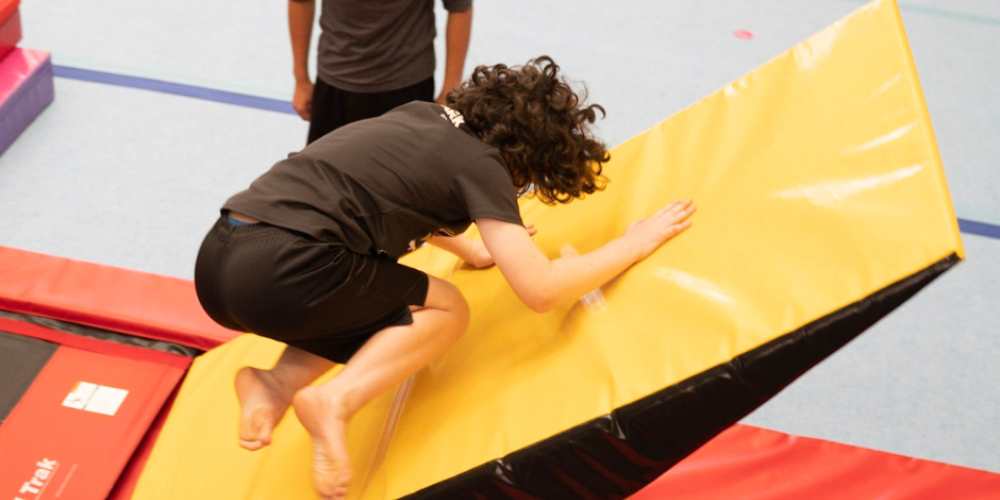
Many parents constantly seek tips to encourage their little ones to stay active and exercise regularly. While there are many great ideas on how to do so, it can be overwhelming for parents to ensure their child has the right equipment or toys needed for adequate exercise.
If you need help knowing where to start, research local baby gymnastics classes. Visiting and observing a class before enrolling will help you better understand what your child might enjoy. While some programs focus on fundamentals and stability, others may have more advanced routines that require additional equipment or are more physically demanding.
Gymnastics is an excellent choice if you're looking for a program to help your child build their confidence and self-esteem. It provides an opportunity for children to learn how to work together with others, which can be crucial in later life as they grow into adults.
The first step in motivating your child to enjoy gymnastics is creating an environment that makes it fun and engaging. One way to do this is using colourful and safe equipment, like mats or balls. You can also play music while you exercise with your kid, so they feel more confident while working out. You can also use props such as jump ropes, hula hoops or Frisbees, so they can stay energized when doing their exercises at home.
Have them do basic exercises to learn how to move around on the floor without falling over or getting hurt (like learning how not-to-trip). This will ensure they feel safe while learning something new and make the total experience less scary (and maybe even FUN!).
Before you start, it's essential to consider your child's age and skill level. Choose activities that are appropriate for their age and ability level.
For example, if they've been doing gymnastics since birth, they should start with basic skills like sitting on the floor or walking around the gym while holding onto a bar. Toddlers with no previous experience can do simple poses like "caterpillar" and "cat," which require little coordination but keep them active without putting too much pressure on their young bodies.
Patience is essential when you're getting your little one ready for gymnastics. Your child may take time to adjust and get used to new activities. Encourage them with encouragement and support—and celebrate their success when they succeed in something new!
Be positive and encourage your child to keep going with Baby Gymnastics. Be flexible in how you practice, so your child feels comfortable doing what they want and does not feel pressured to do something else instead of gymnastics.
Please make sure you are patient with your little ones as they get older. This will help them understand what is expected from them at different stages of their development.
Keep things consistent. This will help avoid negative feelings towards their performance if they cannot go all out because someone else did better than expected during a routine.
The frequency with which the youngster practises will be determined by age and ability level. More minor children should practise once per week, while older and more proficient gymnasts should practise many times each week.
Gymnastics may help children develop their coordination, flexibility, strength, and balance. It also fosters discipline, collaboration, and self-esteem.
Gymnastics classes increase strength and flexibility. It promotes self-esteem and mental resilience in youngsters. Gymnastics also teaches children how to establish objectives and have the discipline to attain them. It teaches toddlers, as well as school-age youngsters, how to overcome fear.
Gymnasts can start training as young as two years old. They begin so early because kids of that age have not yet developed a fear of falling. As a result, the child develops muscle memory at a young age, allowing them to flourish while still young.
Whether you're a parent or a teacher, it takes a lot of work to get your child excited about anything outside of the home. That said, gymnastics can be an exciting option if it's done right.
What can you do to encourage your little one to learn gymnastics? Don't assume that they don't like it—they probably lack self-confidence. Show your child the fun side of gymnastics and the hilarious mishaps that spring from the sport's frequent mistakes, and never get annoyed with them for bashing their head on the floor.
In the end, to ensure your child enjoys gymnastics, you must ensure that you do all you can to help them enjoy the sport. In other words, you must be a good role model for them as they attempt to follow in your footsteps. Through activities that you do and encourage them to participate in, as well as helpful tips that you provide, you can make sure they are learning the necessary skills they will need while they are in your care. After all, a broken nose is better than no result at all.
Every parent wants their child to be healthy and fit. That is every parent's joy, right?
You want your child to grow up strong, healthy, and happy as a parent. Kids' gymnastic classes are one of the techniques perfect to encourage your little ones' physical development at an early age. Baby gymnastics, commonly referred to as baby gym or infant gymnastics, is a fun and engaging approach to support your child's development of flexibility, balance, strength, and coordination. It can benefit a child's social, emotional, and cognitive growth in addition to their physical development.
Read further as we will discuss the significance of baby gymnastics, the benefits it may provide your baby, and recommendations for keeping your children safe and healthy throughout the exercises.
BabyGym is a fun, safe, and supervised movement programme for infants and toddlers to explore and develop alongside their carers. It concentrates on basic movement exercises that lay the groundwork for healthy brain development and an active lifestyle.
Baby gymnastics is a form of gymnastics that focuses on improving coordination skills for babies as they develop their motor skills. It involves activities like swinging, crawling, rolling around on the floor and so forth, all activities that help develop coordination in babies. Baby gymnastics is also known as baby gymnastics or baby gym class.
Baby gymnastics is a great way to exercise your baby. It's fun and helps them learn how to move their bodies in ways they can't work alone.
A good baby gymnastics program will teach your basic child skills (e.g., roll to tummy right or roll to sit down) and help boost motor development. They can also enhance coordination and improve your child's balance!
Baby gymnastics also build muscle tone and coordination by making them work with other children around their age. This teaches them how to work together and gives them time away from parents who might be tired or busy during the day.
It's not just about getting your child moving, though; it's about getting them excited about physical activity too!
Baby gymnastics and regular gymnastics training are two separate things. The main difference is that baby gymnastics focuses on a child's development, whereas regular gymnastics focuses on skill development. Baby gymnastics is intended to help a child reach their physical and cognitive milestones. In contrast, regular gymnastics helps them develop their skills.
While both types of training are considered valuable, they are not alike. One of the most crucial differences is that baby gymnastics focuses on fun, while regular gymnastics concentrates on developing skills. Babies have less pressure than older kids when participating in these activities.
Baby gymnastics is a more playful, active and fun way to exercise. It's also less strenuous than regular gymnastics training. This makes it easier for your little ones to enjoy the activity, especially if they're starting or have been doing it for years.
Baby gymnastics focuses on developing skills such as crawling, walking and jumping; improving balance and coordination; improving strength; building confidence through fun activities such as playing with toys or touching different textures; learning how they fit into the world around them; learning how their body moves through space; learning how they can move objects using their body weight alone (without using any tools); practising social skills such as sharing possessions or playing together; practising discipline by staying focused on the task at hand even when distractions arise such as meeting new people.
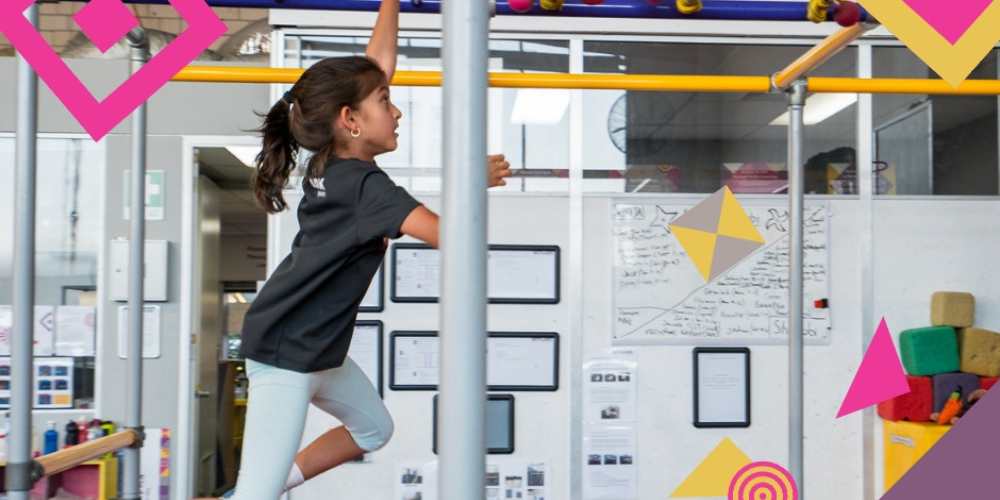
Baby gymnastics is one of the best ways to help your child develop motor skills, coordination, and listening skills. It also helps them learn how to work together with others.
Baby gymnastics offers an opportunity for children with little experience in organized sports or childcare activities, as well as those whose parents may need more time or money for other types of physical education classes. With baby gymnastics, you can give your little ones the opportunity they need while simultaneously ensuring they are having fun!
Baby gymnastics can be a great way to help your baby develop gross motor skills. These muscles are used when running, jumping and climbing, so having them work out will help them develop their bodies!
Gross motor skills are also necessary because they help children learn how to coordinate their muscles. This coordination is critical for everything from walking to swimming to sports.
Baby Gymnastics is an exercise program that helps babies develop balance and coordination while learning to walk. The program includes simple exercises like crawling, sitting, and standing that help strengthens the muscles around their joints and improve their movements. Parents can begin practising these exercises at six months old with their children daily.
Baby gymnastics is the perfect activity for your little one because it's fun, gentle, and easy to do. It's also great for strengthening your baby's muscles and bones, which means they'll be less likely to get hurt as they grow up. Baby gymnastics is an excellent way to bond with your baby positively while exercising together!
Baby gymnastics is a great way to stimulate brain development in your baby.
It's based on the idea that the more babies explore their environment, the more they learn about the world around them. That's why baby gymnastics is so good for your baby: it allows them to move and play while they learn how to work with their body and other people's bodies.
Baby gymnastics helps babies develop their senses and develop motor skills. Baby gymnastics is a great way to build up your baby's muscles while learning simple movements. It's also great for helping them coordinate with their bodies, which is crucial for later in life when they're trying to be independent (and it helps them get used to being on their own).
Baby gymnastics classes can be a great way to improve your child's sensory processing. The movements are repetitive and allow them to focus on one thing at a time, which helps to improve their ability to filter out unnecessary information.
Gymnastics is a great way to teach children about spatial awareness and perception. Gymnastics involves using various equipment, such as hoops, beams, or stuffed animals.
Baby gymnastics helps teach your baby how to move through space, which will help them develop their ability to navigate the world around them later on in life. It also helps them learn the basics of how their bodies work, which is essential for learning language and motor skills later in life.
Baby gymnastics is a fun way to get your baby moving and exercising while also building their self-esteem and confidence. Baby gymnastics boost your child's confidence and self-esteem. It also teaches them how to build their muscles, which will help them develop later in life.
Baby gymnastics is a great way to get your children moving and exercising while they're still young, so they don't end up fidgeting or being bored at home for the rest of the day.
Baby gymnastics is a great way to reduce stress and anxiety. Not only does it promote physical development, but it also helps your baby learn about different colours, shapes, and movements.
Baby gymnastics is a great way to reduce stress and anxiety. Not only are you working out at the same time as your child, but you're also bonding with them. You'll both have fun and see how much they've improved in just a few months!
With baby gymnastics, you can enjoy a fun time with your child while developing essential skills for them.
Gymnastics allows parents or caregivers to bond with their children and learn about the importance of coordination, balance, and strength. It also allows caregivers to work on their fitness and observe their baby's growth and development.
Gymnastics activities are fun for children of all ages. But, as with any sport or activity, there are safety considerations that parents should be aware of.
Here are some safety tips to keep in mind:
Most baby gymnastics programmes accept newborns as early as six weeks old and some as little as two weeks old. Nonetheless, it is advised that newborns begin baby gymnastics between the ages of three and six months when they have gained more substantial head and neck control and can sit up with help.
Baby gymnastics programmes are typically safe if they are run by skilled and experienced coaches or instructors who adhere to safety requirements and utilize age-appropriate equipment. But, as with any physical exercise, there is always the possibility of damage, so selecting a reputable programme and paying close attention to your baby's requirements and emotions is critical.
Most baby gymnastics courses urge parents to join, especially for smaller infants who may require more help and attention. Nevertheless, some organizations provide courses where parents can sit on the sidelines and observe.
Parents should search for a certified and experienced instructor who follows safety requirements and utilizes age-appropriate equipment when selecting a baby gymnastics class. Before committing, they should assess the program's reputation, location, timetable, cost, and the possibility of trial courses or free sessions to test the course.
Baby gyms are a fantastic approach to promoting child development in a safe, engaging, and enjoyable setting. Baby gyms can help toddlers acquire the abilities they need to flourish by boosting physical, cognitive, and social-emotional development.
Furthermore, it will be easier for them to be healthy their entire lives since they'll have developed physical strength and the ability to keep their bodies safe in the event of an accident.
Consider investing in a baby gym to encourage your toddler's growth. Your toddler will appreciate it!